
Loneliness – which can leave people feeling anxious, disconnected, and emotionally isolated – now affects 58% of adults in the United States. Given its association with mental health, the need to continue to raise awareness about loneliness remains.
The Cigna Group has studied loneliness since 2018, using our proprietary Loneliness Index, which revealed that 46% of U.S. adults were experiencing loneliness. Over the following years, the U.S. has experienced a pandemic, economic uncertainty, social and political strife, and more. So, it is unsurprising that our continuing research shows that loneliness has increased steadily, from 46% in 2018 to 58% in 2023, a 12 percentage point increase over the five-year period.
Loneliness is on the rise and linked to vitality
The Cigna Group’s annual Vitality in America study looks at loneliness through the lens of vitality, providing new insights.
To define vitality, our studies utilize the Evernorth Vitality Index (EVI), which measures a person’s perceived ability to make choices and engage willingly, develop skills and knowledge, and connect to others across eight interdependent, dynamic dimensions of health that impact vitality: emotional, environmental, financial, intellectual, occupational, physical, social, and spiritual. The EVI provides a comprehensive framework through which we can redefine health and reimagine how we seek to improve our own health and the health of others.
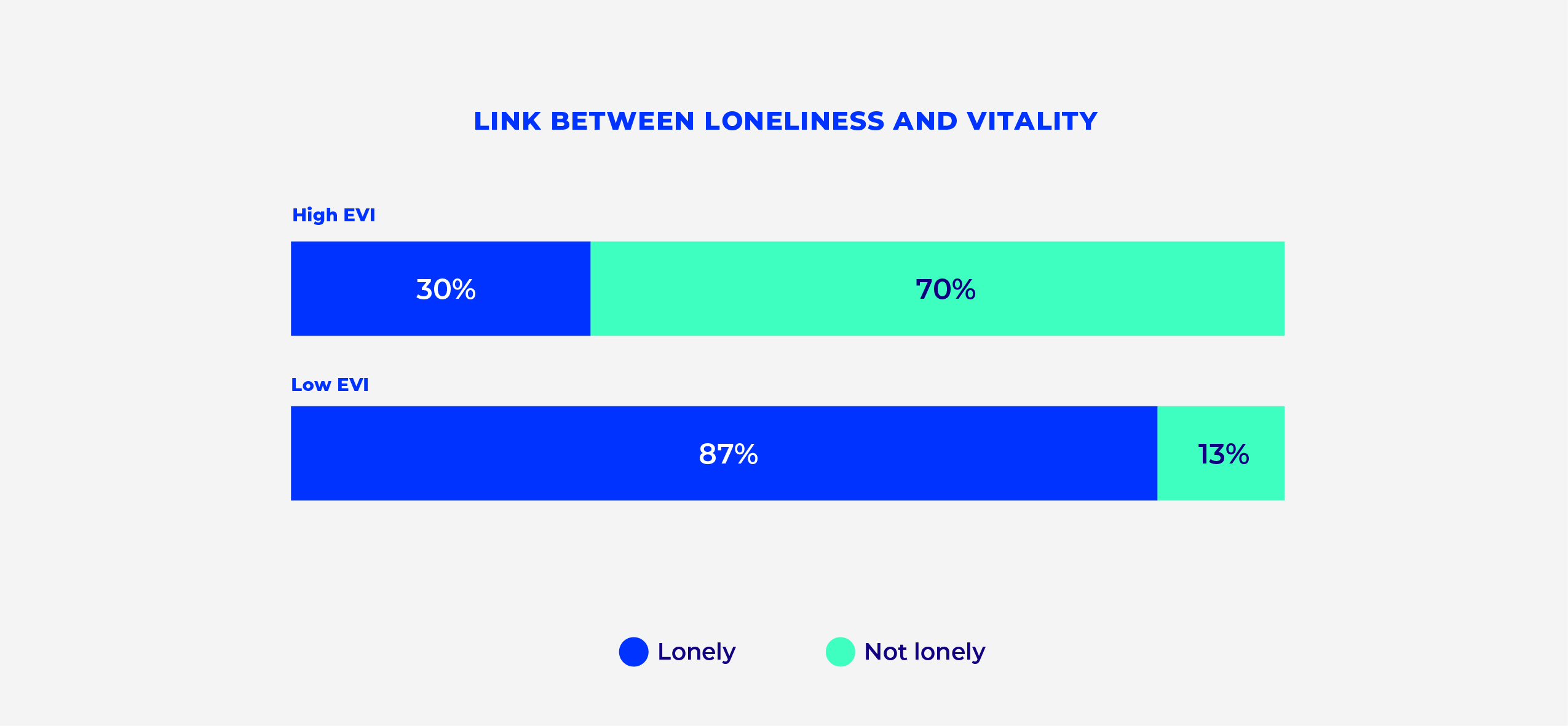
Key learning: Our 2023 vitality research confirms an increase in loneliness and a high correlation between vitality and loneliness. For example, 87% of people experiencing low vitality are lonely, nearly three times higher than the 30% of those with high vitality who report being lonely. Lonely people also report more challenges in the emotional, environmental, intellectual, social, and physical dimensions of health than those who are not lonely.
Loneliness exacerbates health challenges
In 2018, we found that loneliness became more prevalent as self-reported health worsened. Those who rated their health as fair or poor had a loneliness score that was nearly 11 points higher than those who rated their health as good, very good, or excellent.
People who are lonely are twice as likely to say their overall health is fair or poor than those who are not lonely. Only about a third of people who are lonely feel they can manage their health conditions. Further, they are less likely than people who are not lonely to feel they have good medical care.
People who have three or more chronic conditions are more likely to report being lonely than those with no chronic conditions (62% vs. 53%). This is particularly true for people who have been diagnosed with depression/anxiety (72%) or have had a stroke (66%). What’s more, people living with cancer or depression/anxiety who have high vitality are more engaged with their health care and are more likely to have visited a provider for a check-up in the past year than people with those conditions who have low vitality.
Finally, people who are not lonely have stronger mental well-being. They are more likely to feel they can control how they react to stress and that they can manage their emotions.
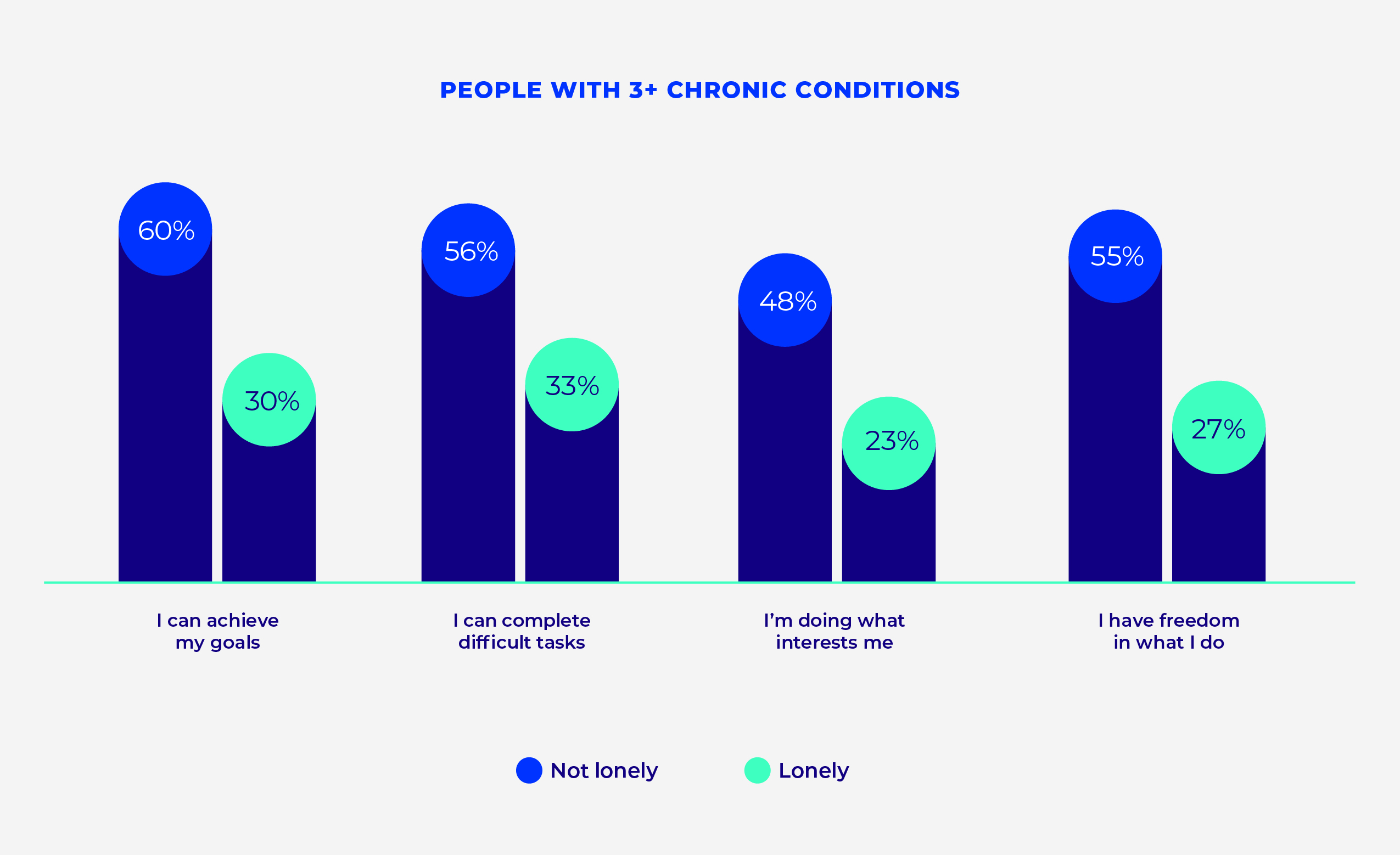
Key learning: Focusing on personal agency, taking ownership of your health, and engaging in activities that build confidence can mitigate feelings of loneliness, even in the face of challenges. People with three or more chronic conditions and who are not lonely feel a stronger sense of autonomy and confidence. They are twice as likely to say they do what interests them, feel they have choice and freedom in the things they undertake, and feel confident they can achieve their goals.
Having fewer meaningful social connections intensifies feelings of loneliness
In 2018, people who reported discontent with their relationships had an average loneliness score that was 13 points higher than those who were happy with their relationships. Conversely, those who were less lonely reported having frequent, meaningful in-person interactions, good relationships, and experienced greater balance in their lives. This trend has remained consistent over the past five years.
In addition, people who infrequently experience feeling left out or lacking companionship are less likely to feel lonely and more likely to have higher vitality. Conversely, those who frequently feel they don't have things in common with others tend to report feeling lonely and have low vitality.
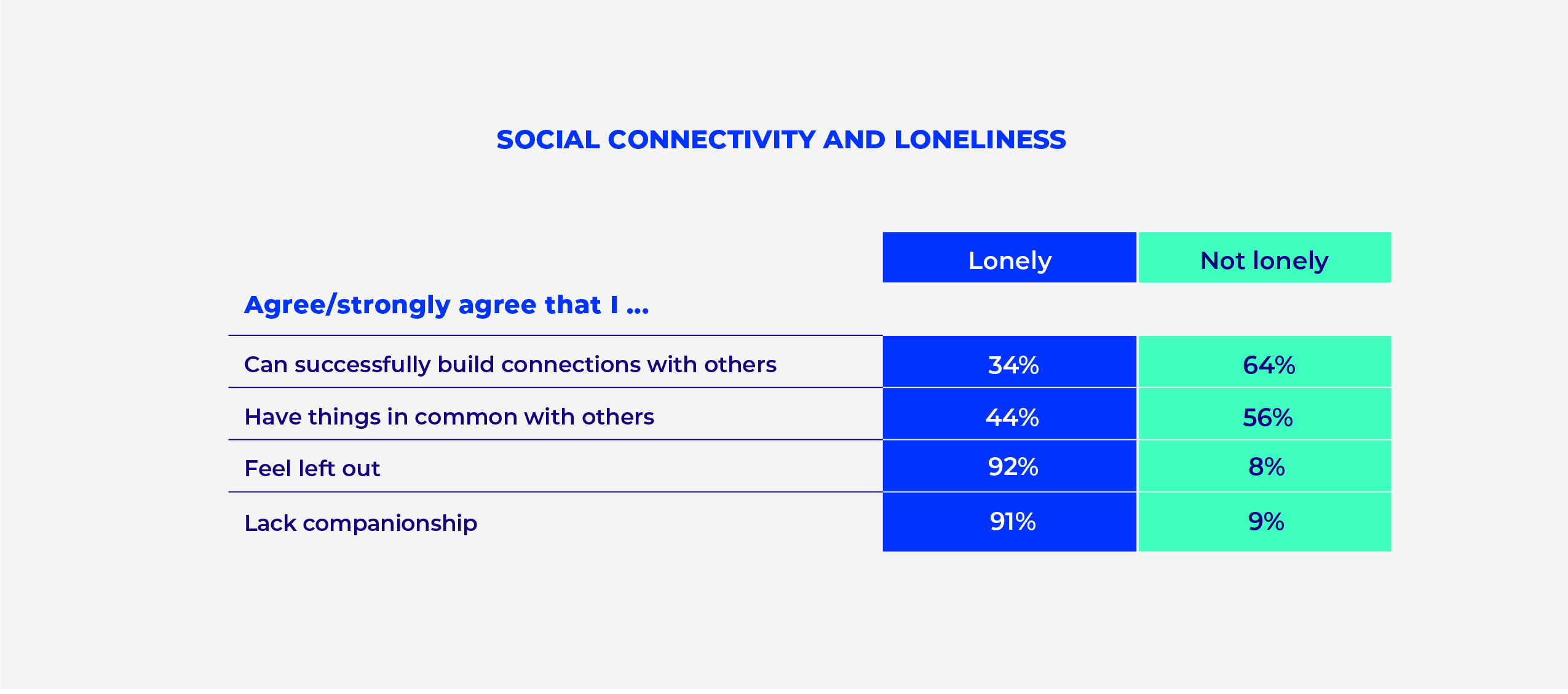
Key learning: Social connections help alleviate loneliness. One of the easiest ways to find people who have things in common is by engaging with others at work (i.e., through employee resource groups, onsite activities, etc.) or in the community (i.e., the YMCA, parent-teacher groups, faith communities, sports such as pickleball, etc.).
Younger generations remain lonelier and less resilient than other adults
In 2018, Generation Z adults (then aged 18-22) were the loneliest generation, followed by Millennials, Gen X, and Baby Boomers, respectively. This trend in generational loneliness continued into 2023. Gen Z adults (now ages 18-26) are still the loneliest, with 71% feeling lonely, followed by Millennials (65%), Gen X (59%), and Baby Boomers (44%). Surprisingly, loneliness increased most significantly over the last year for Baby Boomers (9%) and members of Gen X (4%) while not changing much for younger Americans.
Our research also indicates a relationship between loneliness and resilience. Gen Z has the highest levels of loneliness and the lowest levels of resilience; the inverse is true for Baby Boomers. It is noteworthy that lonely people of both generations show lower levels of resilience, with only about 1 in 3 lonely Gen Zers and Baby Boomers saying they can adapt when changes occur or can bounce back after an injury or illness.
People who are less lonely show much stronger resilience. Nearly half of Gen Zers who are not lonely report they can bounce back after a hardship (49%) or adapt to changes (46%). Those numbers are significantly higher in Baby Boomers, at 62% and 59%, respectively, presumably because experience helps older people realize they can survive life’s ups and downs.
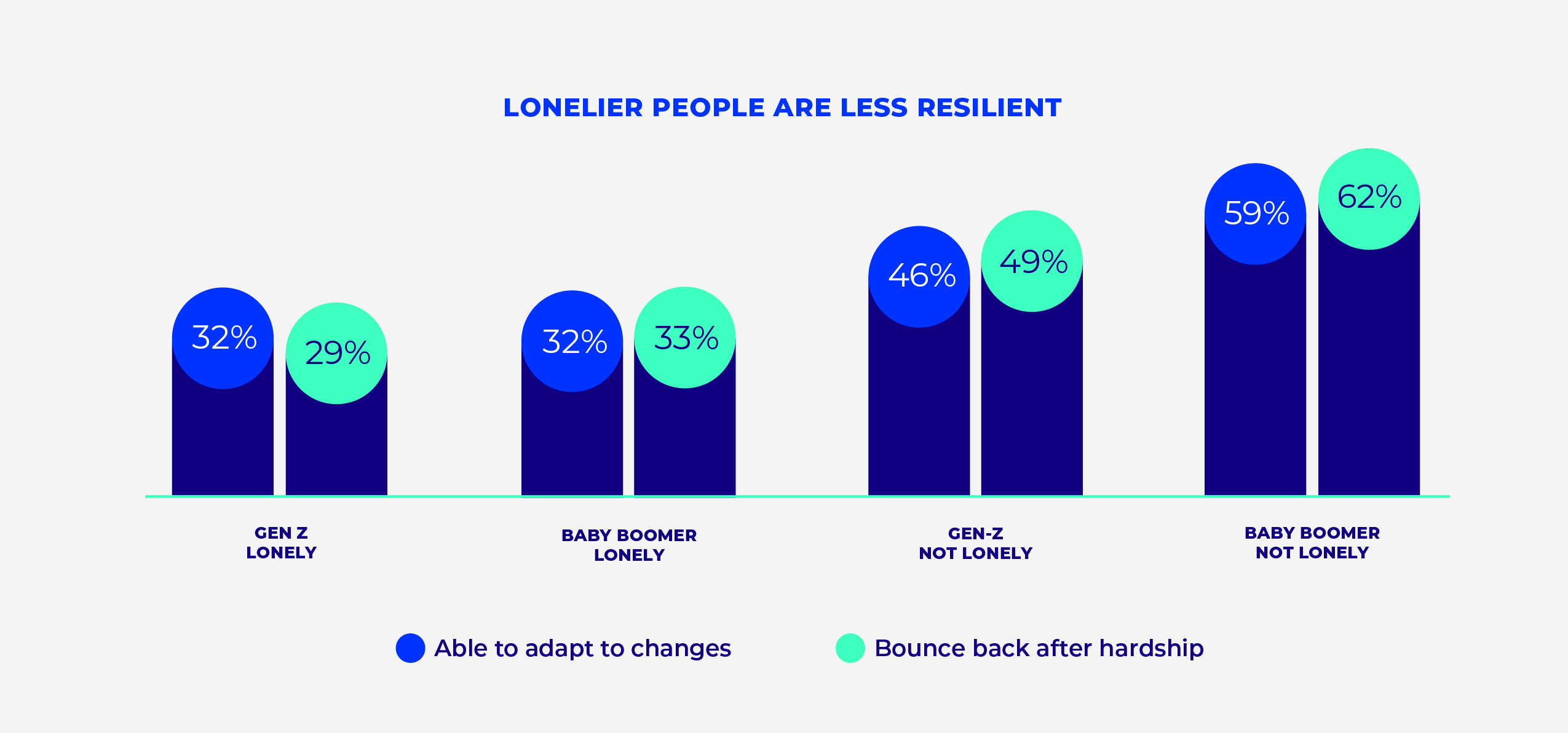
Key learning: While resilience increases as people age, those of all ages can employ ways to develop resilience, including cultivating relationships, prioritizing health, and placing a priority on helping others.
Men and women are equally lonely
Historically, women have perceived themselves to be lonelier than men, although the differences were slight in 2018 (54% for women vs. 53% for men) and in 2023 (57% vs. 58%). More striking is the overall increase in men who report feeling lonely over the years. In 2023, 58% of men perceive themselves to be lonely, up from 50% just a year earlier. Comparatively, women’s loneliness increased from 55% in 2022 to 57% in 2023.
Men who are lonely are more likely than men who are not lonely to say they have experienced a personal loss or hardship in the past year (39% vs. 25%) and nearly twice as likely to have experienced a major life event (26% vs. 14%). Interestingly, whether or not they are lonely, men are more likely to have high vitality than women.
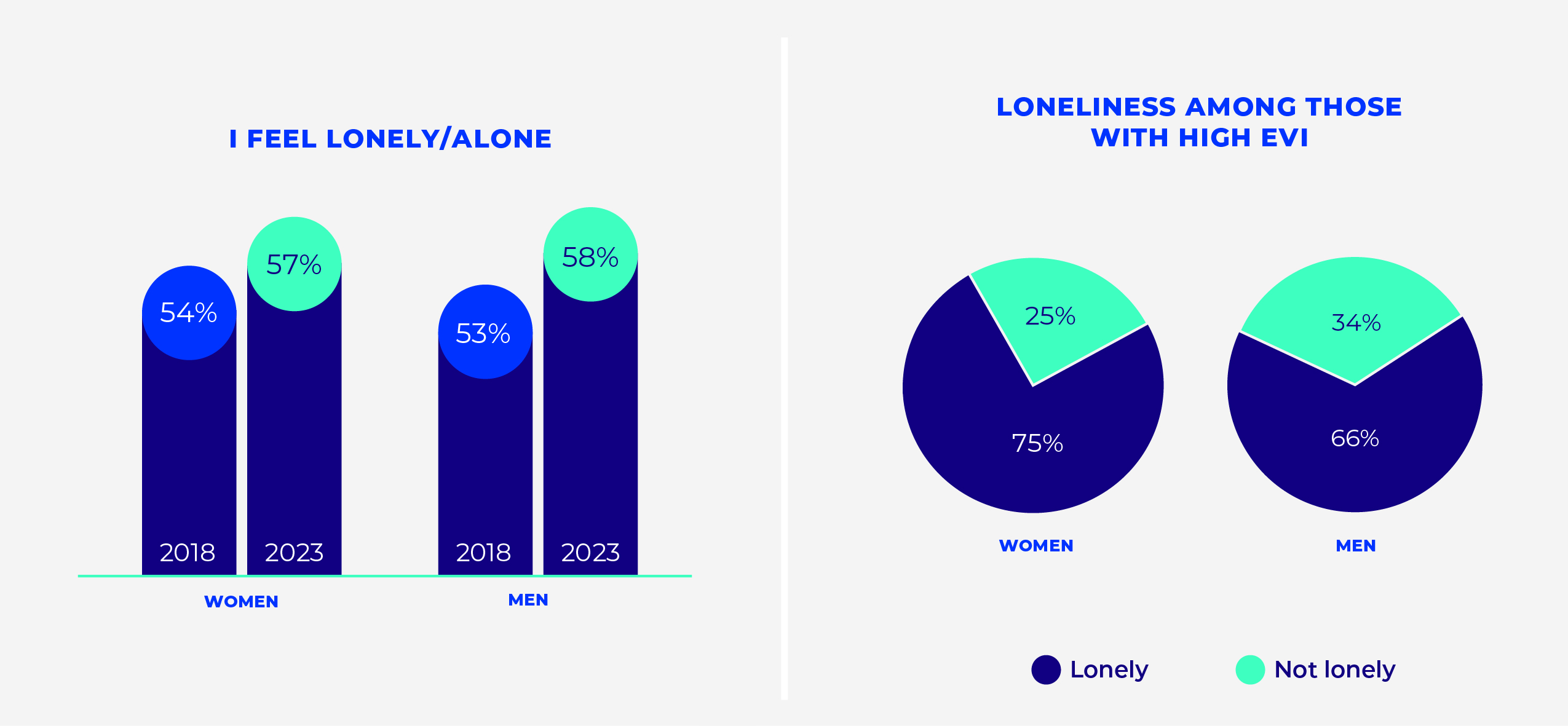
Key learning: People who are lonely are more likely to have experienced personal loss or hardship in the past year. Finding support in the community – or offering support or sharing your expertise to people in your community who are experiencing a difficult time – can build vitality and decrease loneliness.
Lonely parents struggle more
2018 data showed that spending time with family plays an important role in alleviating feelings of loneliness. Parents living with a spouse or another adult are less likely to be lonely, and single parents/guardians are the loneliest.
Today – as in 2018 – single parents are lonelier than their married or cohabiting counterparts, with 71% of single parents with children under 18 being lonely vs. 57% of those in a relationship. We also learned that parents who report feeling lonely are more likely to struggle to find childcare, which can make it difficult for them to work. They also are more likely to feel drained, to look at their daily activities as obligations, and to report poor mental health.
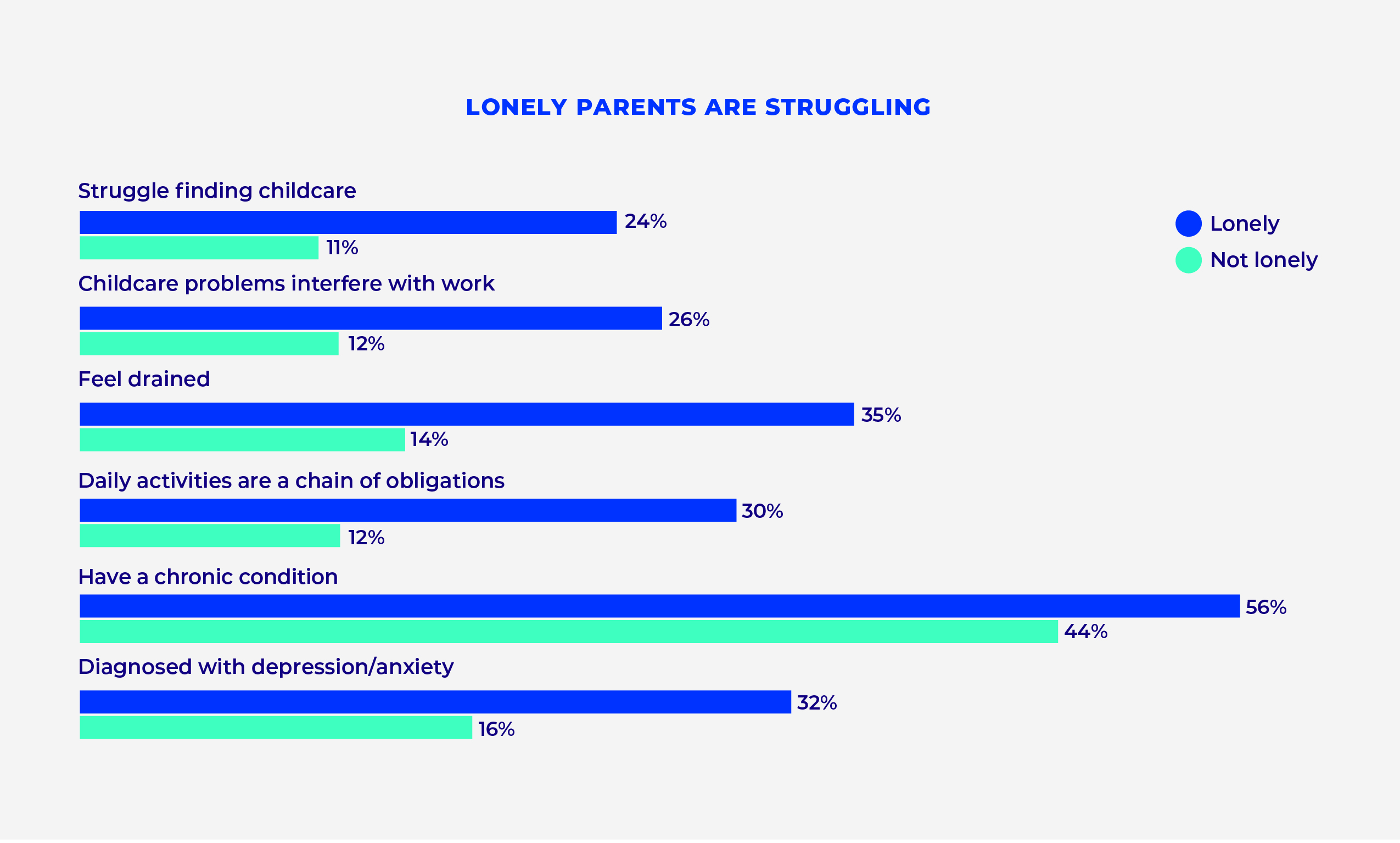
Additionally, the 2023 research shows that loneliness is even more pronounced for parents of a child who has a disability: 58% say they feel left out and 60% say they lack companionship, compared with 45% and 47%, respectively, of those whose children do not have a disability, while 40% feel drained, compared with 26% of those who do not have a disabled child.
Key learning: Parents experiencing loneliness are four times as likely as non-lonely parents to feel excluded (23% vs. 6%). They report wanting to learn how to improve their vitality and say they need help doing so. This is an opportunity for employers, family members, health care providers, and communities to support parents as they strive to raise the next generation of healthy Americans.
Vitality is the antidote to loneliness
Vitality is the foundation for empowering people to embrace their health and well-being in an actionable way. When individuals feel they have agency over their lives, as well as support and the sense of belonging that come from social connectivity and interpersonal relationships, their health, strength, and energy improve.
In short, the more we consider and care for our vitality, the more it fuels us. Vitality is the antidote to loneliness, which leads to more joy and happiness, stronger families and communities, more capable businesses, and a better future for our society.
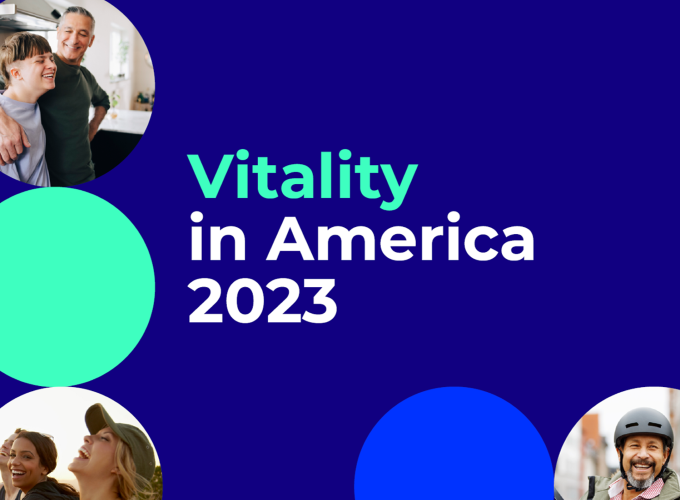
Vitality in America 2023
Take a closer look at this year’s Vitality in America study to learn how individuals can improve their health, well-being, and vitality.